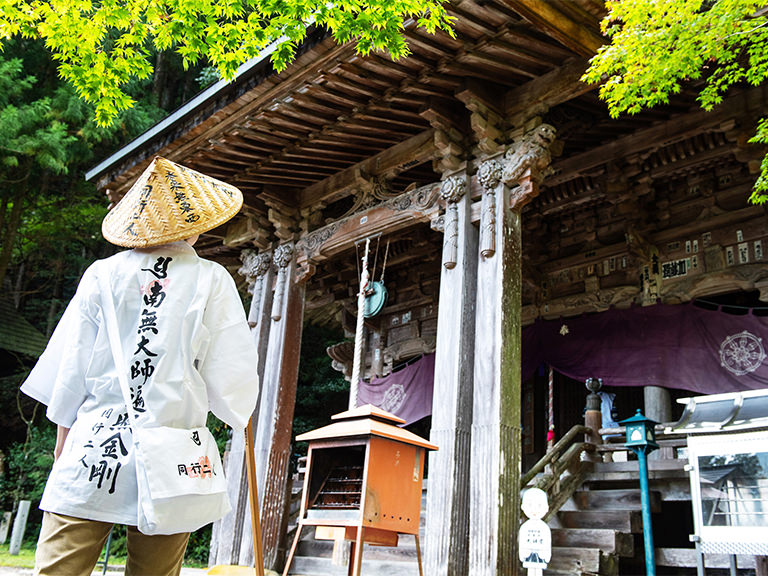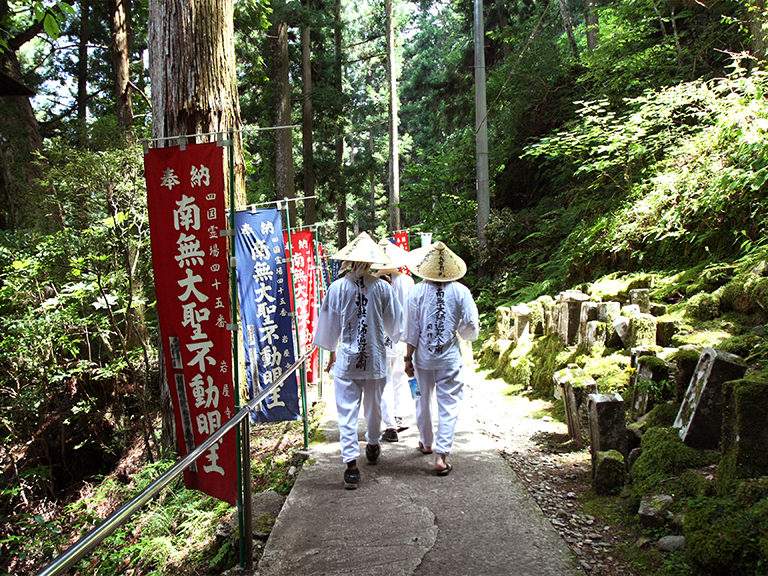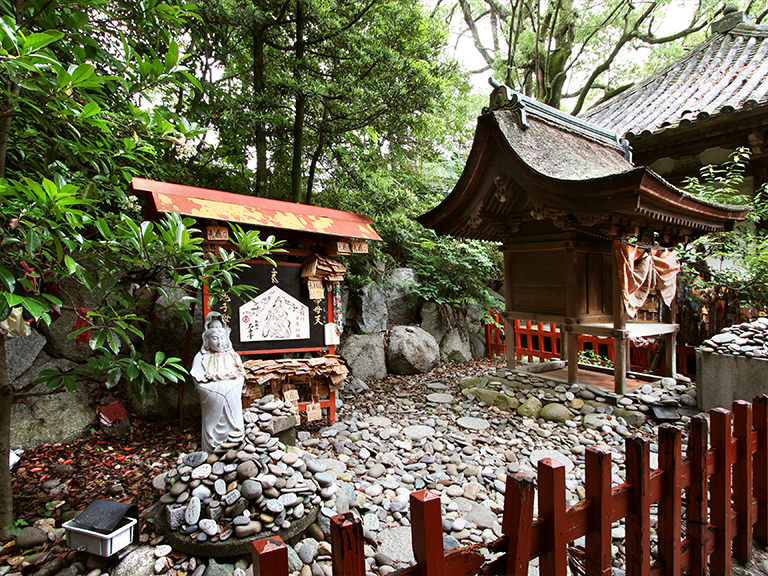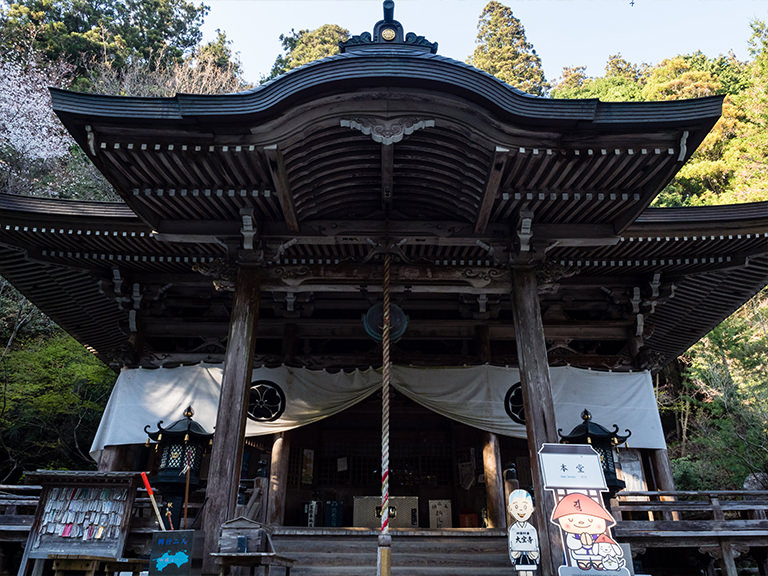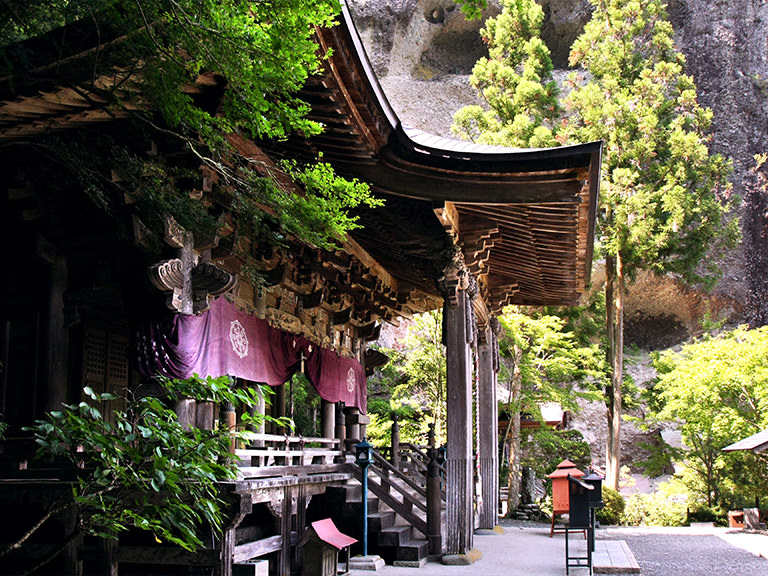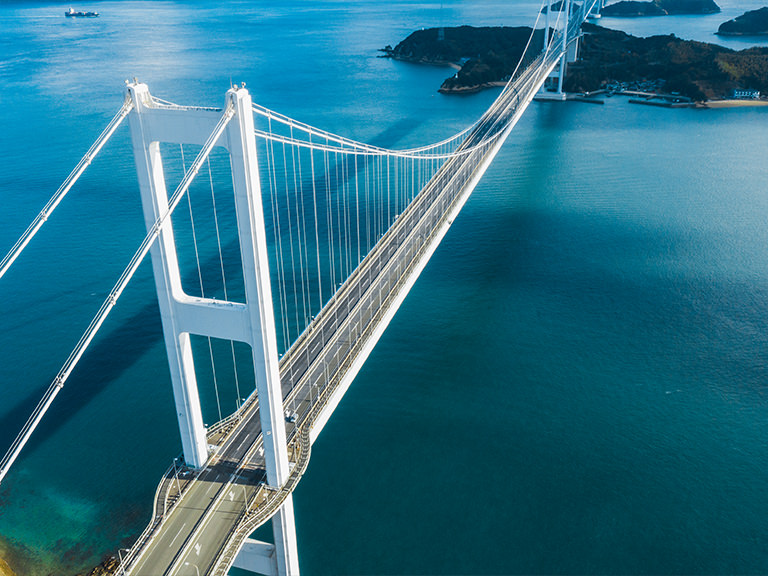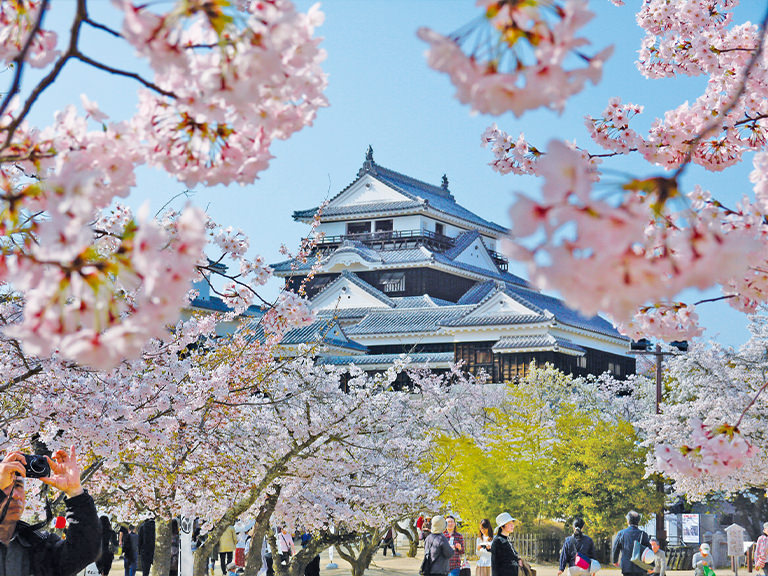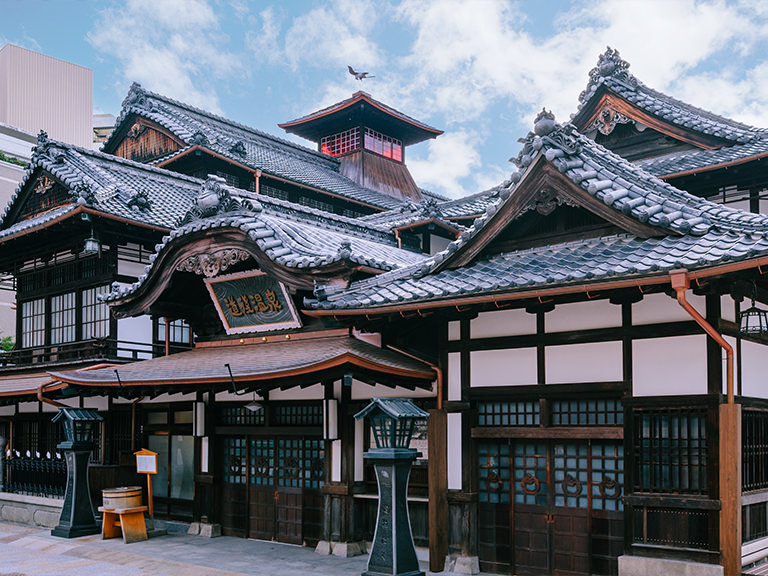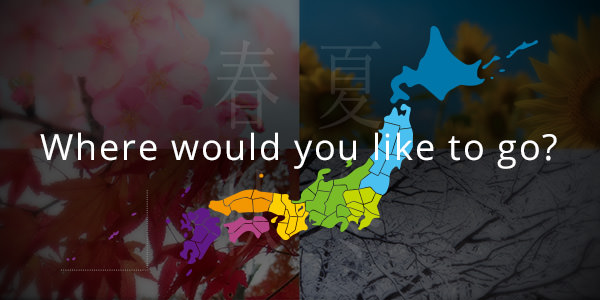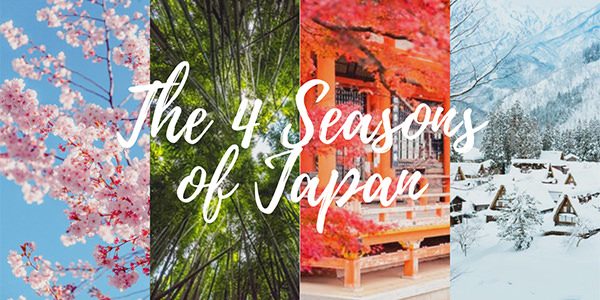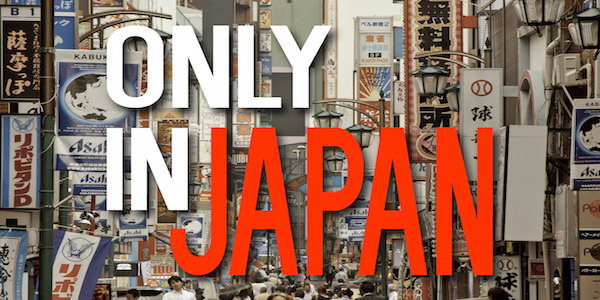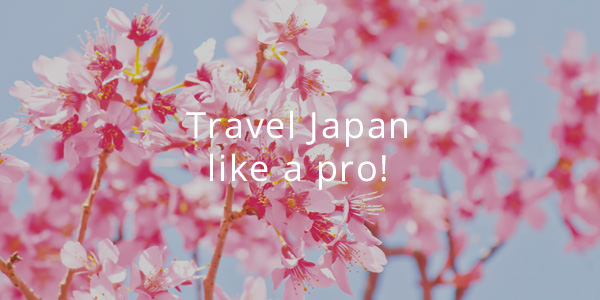Shikoku, a large island just off Japan’s southwest mainland, is split into the four regions of Tokushima, Kagawa, Ehime, and Kochi. All have airports with direct flights to Tokyo in under two hours, making this remote nook of Japan surprisingly accessible. Shikoku is full of charm, from a swathe of unique natural wonders like the island-studded Seto Inland Sea to delicious natural seafood and farm produce, along with off-the-beaten-path historical townscapes, one-of-a-kind traditional festivals, and more.
The best of Shikoku can be experienced on the Shikoku Pilgrimage, which connects 88 temples circling the island over a 1,400 km route first walked by Buddhist monk Kobo Daishi (Kukai) around 800 CE. Today, pilgrims and travellers can follow the route on a journey of rebirth and self-discovery while enjoying the scenery and mingling with friendly locals. The Shikoku Pilgrimage has been gaining traction as a unique and meaningful way to tour Shikoku while diving deeper into authentic Japanese culture. While the pilgrimage’s enormous length and profound legacy may feel daunting, these days, travellers of all kinds are welcome to casually hop on and off the route at their leisure, and there are both hiking trails, roads, and public transport options to get around.
Ehime Prefecture is a land of vast mountains, bountiful oceans, and ancient hot springs. Its dynamic terrain stretches from the Uwakai Sea facing Kyushu over Mount Ishizuchi, the tallest peak in western Japan, and into the Seto Inland Sea bordering the mainland. Its cities and towns are criss-crossed by quaint, old-fashioned streetscapes, while natural hot springs heal fatigue and scenic cycling roads promise adventure.
Ehime is also the turnaround point on the Shikoku Pilgrimage, and it contains the largest number of temples, with 26 starting from Kanjizaiji Temple (No.40), the furthest from the start, to Sankakuji Temple (No.65). Those who complete the Shikoku Pilgrimage are said to have their wishes granted and receive the blessings of Kobo Daishi, and just walking the Ehime section alone, called the “Dojo of Enlightenment,” will remove worldly troubles and encourage a spiritual awakening. Best of all, Ehime locals are warm and proud of their hospitality culture, making travellers on the road feel wholly welcome at each stop.
Recommended Temples in Ehime
This mystical temple near Dogo Onsen is said to have been blessing visitors with health and childbirth for over 1,300 years. Most of its structures are designated National Treasures and Important Cultural Properties, and its Treasure Hall, Mantra Cave, and other assets are utterly spellbinding. It enshrines Kishimojin, a deity that protects children, making it popular for those seeking divine assistance in childbirth. Plus, dirt from all 88 temples on the Shikoku Pilgrimage is stored on the grounds, which visitors can touch to complete the route. For foodies, the temple’s “yakimochi” roasted rice cakes, made using traditional methods, have earned fans from all over Japan.
Tucked amongst the Shikoku Mountains, the quiet and secluded Daihoji Temple sits at an altitude of 579 meters and is near many “henro korogashi” spots, which are the most difficult parts of the trail. This solemn site is also the halfway point of the pilgrimage, found at the end of a path of cedar trees that are hundreds of years old. The precincts also contain the Shimoyozuka, considered the oldest stone engraving made in memory of Matsuo Basho, Japan’s most famous haiku poet, drawing in many fans to pay respects. The surrounding town of Kumakogen is likewise a treasure trove of natural wonder, home to Mount Ishizuchi, the highest mountain in western Japan, the Shikoku Karst, one of Japan’s largest karst formations, and the upper reaches of the Niyodo River, which flows through the Omogokei Gorge and is considered the purest river in Japan.
This historic mountain temple is famous for its spectacular rocky scenery. The entire mountain is enshrined as the principal deity, and the Main Hall is built into the enormous boulder behind it. The grounds, which were declared a Place of Scenic Beauty, brim with a serene and reflective energy, and are encircled by dynamic rocks and a primeval Japanese horse-chestnut forest. Monks have trained in the caverns dotting the steep cliffs since ancient times, and visitors today can enjoy a sweeping view of the temple and its rocks and trees from a cave near the Main Hall. An even grander panorama awaits facing Mount Ishizuchi and many other peaks from the hilltop Okuno-in Hall, which can be reached by climbing the cliff using chains and ladders. Finally, don’t miss the Daishido Hall, which is registered as an Important Cultural Property of Japan.
Recommended Ehime Gems Along the Pilgrimage
The Shimanami Kaido is a 70 km cycling route connecting several islands on a strait in the Seto Inland Sea. Alongside jaw-dropping coastal scenery, this cycling mecca is equipped with ample signage and facilities to stop, rest, eat, and stay. You can freely rent and return bicycles on the way by using one of the numerous rental shops following the route. Adventurous cyclists can likewise detour onto islands inaccessible to cars, visit fascinating museums, shrines, scenic parks, and other sightseeing spots, and dine on fresh and unique seafood dishes.
Matsuyama Castle is one of just 12 remaining castle towers built in Japan before or during the Edo Period. The castle is spread out over a mountain in the middle of Matsuyama City, and is designated a Historic Site of Japan with 21 Important Cultural Properties. The fortified architecture is chock-full of fascinating features, like the south side “nobori-ishigaki” climbing stone wall, a defensive structure largely used in Japanese castles built in Korea. It remains in near-perfect condition, and its 230-meter length makes it the largest in Japan. You can reach the 161-meter hilltop tower on a short hike up one of four hiking paths, or opt for an easy ride via ropeway or chairlift. The tower’s highest floor presents a sweeping lookout over the Matsuyama Plain and Seto Inland Sea. In spring, the grounds are engulfed by cherry blossoms, framing the castle in dainty pale pink petals. The Honmaru Square is open until 9:00 pm, so you can revisit after dark to bask in the twinkling nightlights, too.
Along with being the largest city in Shikoku, Matsuyama is a hot spring paradise home to Dogo Onsen. Boasting over 3,000 years of history, Dogo Onsen is believed to be the oldest hot spring in Japan. The Dogo Onsen Honkan, an Important Cultural Property featured in numerous acclaimed Japanese films and novels like Natsume Soseki’s Botchan, is the resort’s centrepiece, surrounded by charming Meiji era streets bustling with yukata-clad revellers. The simple alkaline hot spring waters are gentle on the skin, and are said to have many therapeutic and beauty benefits. The baths in Dogo Onsen draw from these springs directly, without adding heat or water, a rarity in Japan. In addition to bathing at the Honkan, there are two other bathhouses to try out: Tsubaki-no-Yu, the local favourite, and Asuka-no-Yu, adorned with traditional crafts.
Visit Ehime Japan: The Official Ehime Prefecture Travel Website
Visit Ehime Japan has all the latest info on the wonders of Ehime Prefecture, including its pilgrimage walks, hot springs, historical towns, gourmet foods, and more. Visit the website to start planning your ultimate Ehime itinerary!
Details here: https://www.visitehimejapan.com/en


